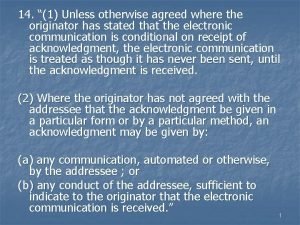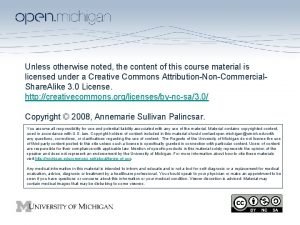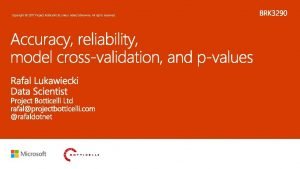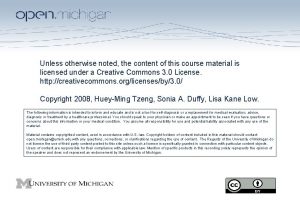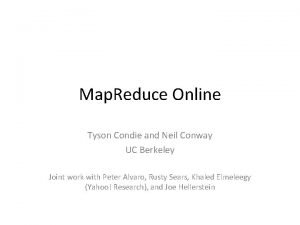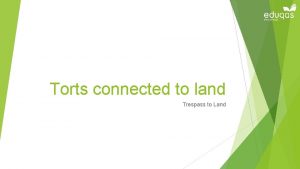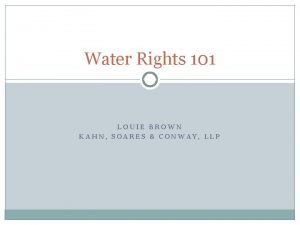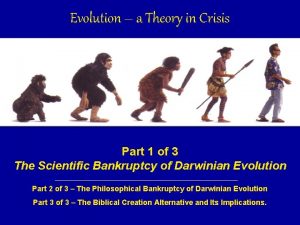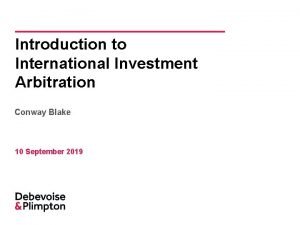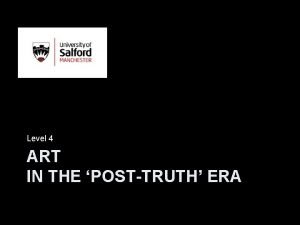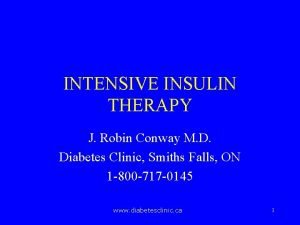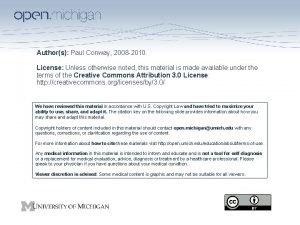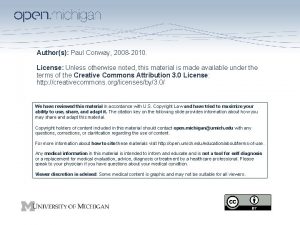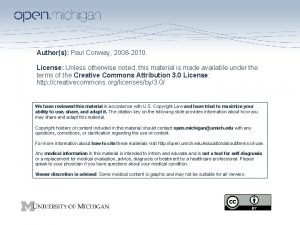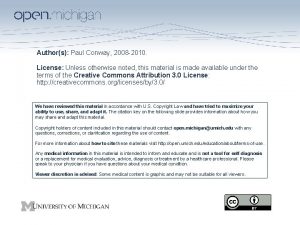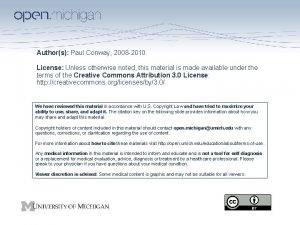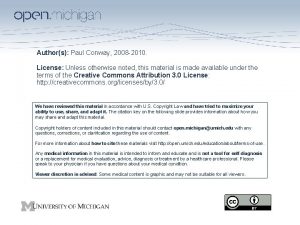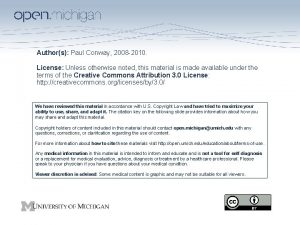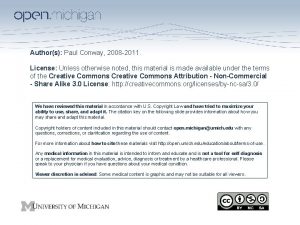Authors Paul Conway 2008 2010 License Unless otherwise











- Slides: 11

Author(s): Paul Conway, 2008 -2010. License: Unless otherwise noted, this material is made available under the terms of the Creative Commons Attribution 3. 0 License: http: //creativecommons. org/licenses/by/3. 0/ We have reviewed this material in accordance with U. S. Copyright Law and have tried to maximize your ability to use, share, and adapt it. The citation key on the following slide provides information about how you may share and adapt this material. Copyright holders of content included in this material should contact open. michigan@umich. edu with any questions, corrections, or clarification regarding the use of content. For more information about how to cite these materials visit http: //open. umich. edu/education/about/terms-of-use. Any medical information in this material is intended to inform and educate and is not a tool for self-diagnosis or a replacement for medical evaluation, advice, diagnosis or treatment by a healthcare professional. Please speak to your physician if you have questions about your medical condition. Viewer discretion is advised: Some medical content is graphic and may not be suitable for all viewers.

Citation Key for more information see: http: //open. umich. edu/wiki/Citation. Policy Use + Share + Adapt { Content the copyright holder, author, or law permits you to use, share and adapt. } Public Domain – Government: Works that are produced by the U. S. Government. (17 USC § 105) Public Domain – Expired: Works that are no longer protected due to an expired copyright term. Public Domain – Self Dedicated: Works that a copyright holder has dedicated to the public domain. Creative Commons – Zero Waiver Creative Commons – Attribution License Creative Commons – Attribution Share Alike License Creative Commons – Attribution Noncommercial Share Alike License GNU – Free Documentation License Make Your Own Assessment { Content Open. Michigan believes can be used, shared, and adapted because it is ineligible for copyright. } Public Domain – Ineligible: Works that are ineligible for copyright protection in the U. S. (17 USC § 102(b)) *laws in your jurisdiction may differ { Content Open. Michigan has used under a Fair Use determination. } Fair Use: Use of works that is determined to be Fair consistent with the U. S. Copyright Act. (17 USC § 107) *laws in your jurisdiction may differ Our determination DOES NOT mean that all uses of this 3 rd-party content are Fair Uses and we DO NOT guarantee that your use of the content is Fair. To use this content you should do your own independent analysis to determine whether or not your use will be Fair.

SI 678 Preserving Sound and Motion Week 1 – Overview, context, ethics 3 SCHOOL OF INFORMATION UNIVERSITY OF MICHIGAN

Themes n n n Introduction to course What this course is and is not about Class structure Philosophy of sound and motion Media issues Intervention “Nothing has ever been preserved – at best, it is being preserved. ” Edmondson, 2004, p. 20. SCHOOL OF INFORMATION UNIVERSITY OF MICHIGAN

What this course is about 1 Introduction 2 What is this… 3 Class structure 4 Philosophy 5 Media issues 6 Intervention n n Specialized environmental control Standards and best practices Digital re-recording and restoration Appropriate metadata Ethics and integrity SCHOOL OF INFORMATION UNIVERSITY OF MICHIGAN

What this course is not about 1 Introduction 2 What is this… n 3 Class structure 4 Philosophy 5 Media issues n 6 Intervention n Treatment of historic recording media Comprehensive overview of preservation of audio, video, motion picture content Intellectual property issues SCHOOL OF INFORMATION UNIVERSITY OF MICHIGAN

Class Structure 1 Introduction 2 What is this… 3 Class structure 4 Philosophy 5 Media issues 6 Intervention n n Learning objectives Outline of topics Assignments Grading Logistical issues SCHOOL OF INFORMATION UNIVERSITY OF MICHIGAN

• Edmonson. Audiovisual Archiving: Philosophy and Principles (2004) Preservation philosophy 1 Introduction 2 What is this… 3 Class structure 4 Philosophy 5 Media issues 6 Intervention n n Definitions Collection and collecting Content Artifact Choices and values SCHOOL OF INFORMATION UNIVERSITY OF MICHIGAN

Media issues – heads up 1 Introduction 2 What is this… 3 Class structure 4 Philosophy 5 Media issues 6 Intervention n n Machine dependency = system Real time preservation Signal and carrier Diagnosis, prevention, rescue SCHOOL OF INFORMATION UNIVERSITY OF MICHIGAN

Ethics of Digitization n n Digitization as intervention Intervention as decision-making Consequences for meaning making Image, audio, motion – similarities in perspectives See table for details. SCHOOL OF INFORMATION UNIVERSITY OF MICHIGAN

Thank you! Paul Conway Associate Professor School of Information University of Michigan www. si. umich. edu SCHOOL OF INFORMATION UNIVERSITY OF MICHIGAN
